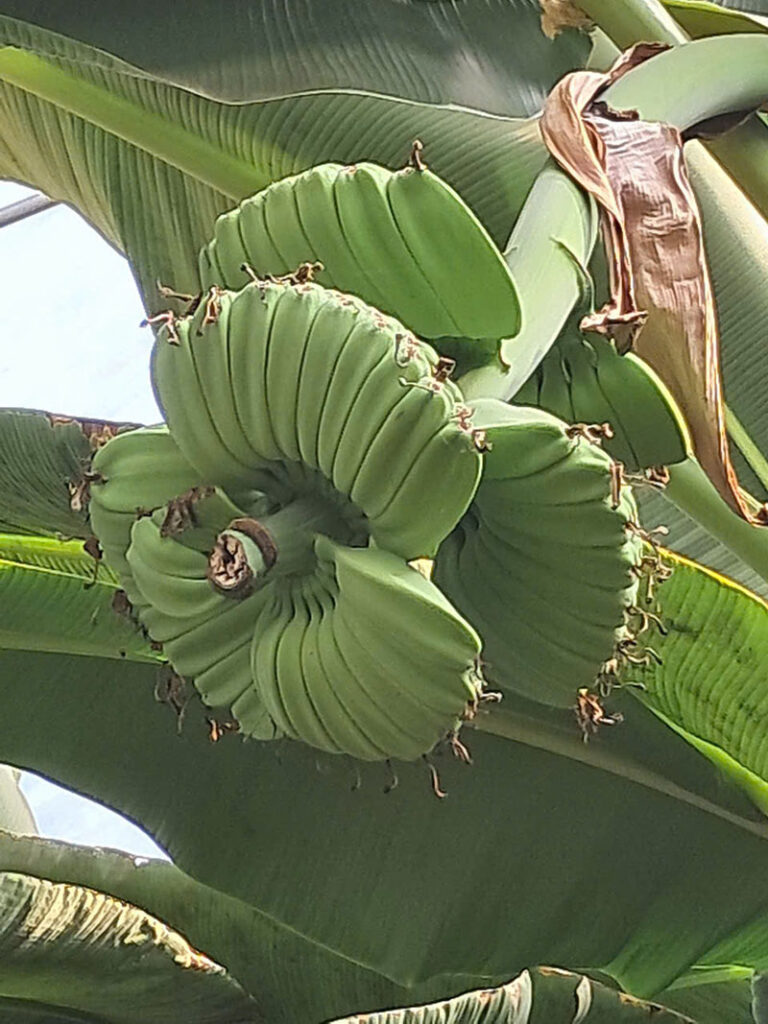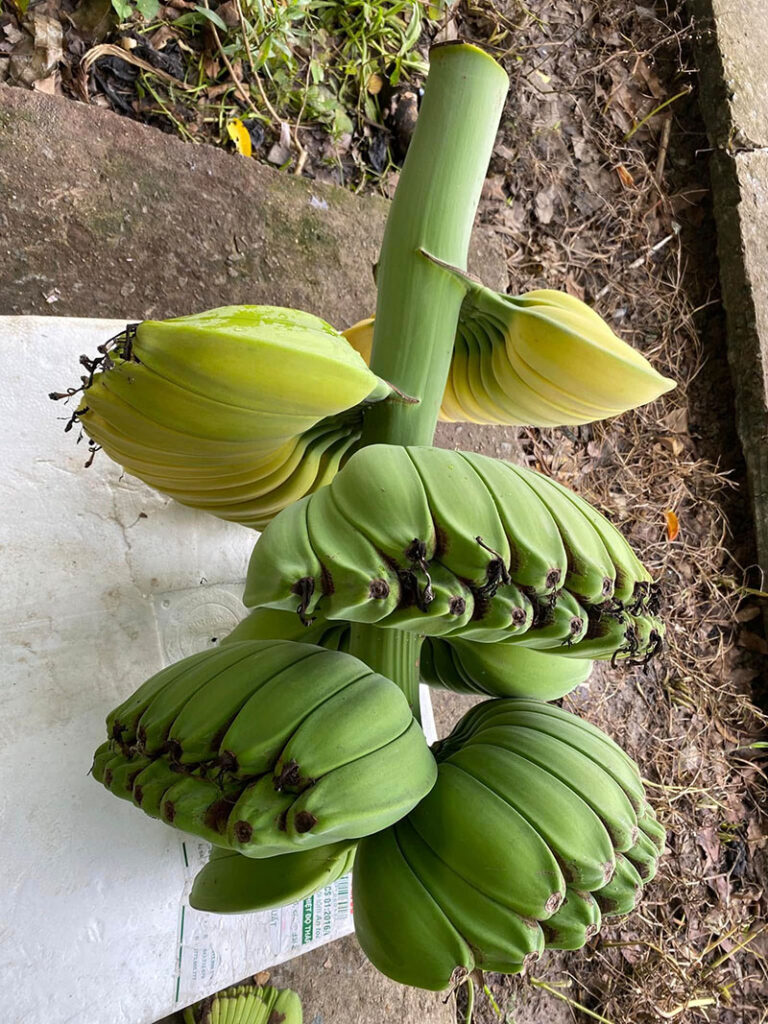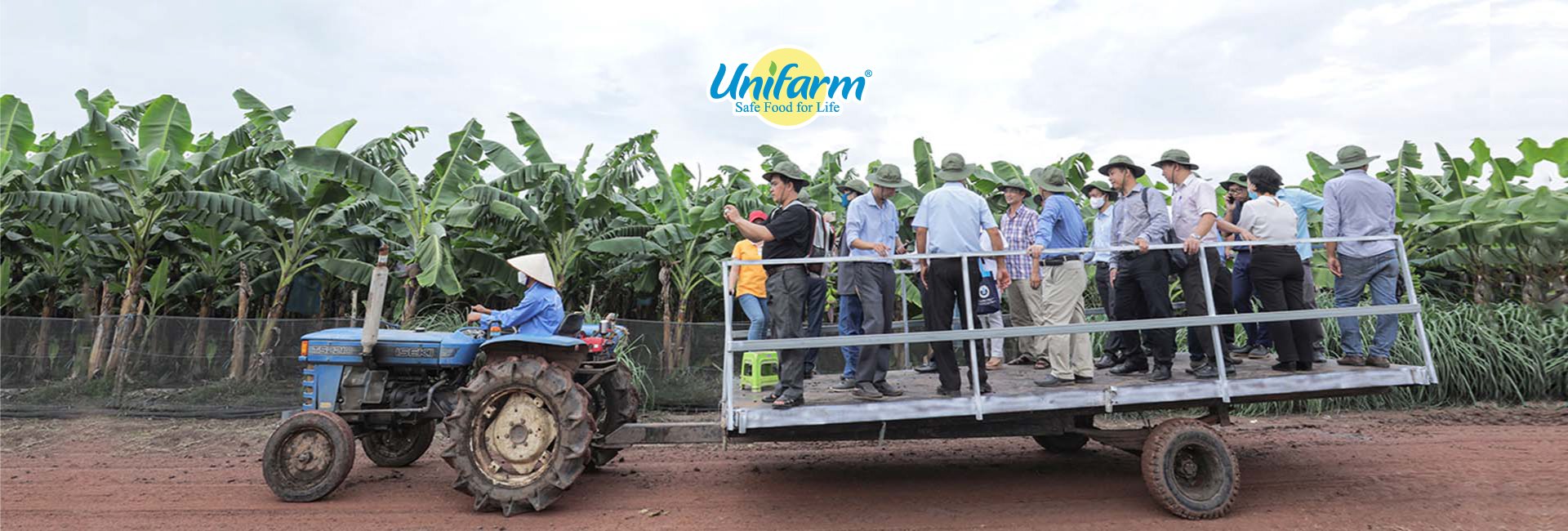Chuối Bàn Tay Phật
Musa Praying Hands Banana: A Sacred and Unique Symbol
General Information
• Common name: Musa Praying Hands Banana (Chuối Bàn Tay Phật), also known as Buddha Hand Wax Banana or Folded Hands Banana
• Genus: Musa
• Group: BBB
• Species: Musa balbisiana (Triploid BBB)
• Banana types: Ornamental, spiritual, and religious significance
• Origin: Southeast Asia, commonly found in Vietnam
• Distribution (in Vietnam): Mekong Delta, Central Vietnam, and the Central Highlands
Description
• The Musa Praying Hands Banana is recognized for its uniquely shaped fruit cluster. The bananas grow in layers, with small, curved fruits (5–10 cm in length) closely packed together, resembling a pair of folded hands in prayer.
• The banana peel ranges from green to pale yellow depending on maturity, while the flesh contains numerous large seeds, making it less suitable for direct consumption.
• The plant grows 1–2 meters tall, with glossy deep green leaves and striking pinkish-purple or bright red flowers. This banana variety is highly valued not only for its aesthetic appeal but also for its deep spiritual significance.
Cultural and Spiritual Significance
• The Musa Praying Hands Banana is considered a sacred symbol of reverence and devotion, closely linked to Buddhist traditions. It is commonly planted in temple gardens, shrines, or home courtyards as a representation of peace, harmony, and spiritual protection.
• The folded-hand formation of the banana clusters symbolizes prayer, devotion, and a pure heart.
• This banana variety is often used in religious rituals, festivals, and ceremonial offerings, particularly during Buddhist holidays, Lunar New Year, and Vu Lan Festival.
Nutritional Value and Uses
• Due to the high seed content, the banana fruit is rarely eaten fresh, but some people boil or steam it before consumption.
• The banana flower can be used in traditional dishes, such as banana blossom salad, soups, and stir-fried meals.
Cultivation Characteristics
• The Musa Praying Hands Banana is easy to cultivate, thriving in various soil types, especially alluvial and sandy soils.
• It has high drought resistance, is pest-resistant, and grows rapidly, producing fruit clusters within 8–10 months.
• Once the plant flowers and bears fruit, the mother plant withers, but new suckers continue to grow, ensuring the propagation of the species.
Conservation and Sustainability
• The cultivation of the Musa Praying Hands Banana is increasing in spiritually significant areas and ornamental gardens. However, due to urbanization and changes in land use, its natural habitat is shrinking.
• Efforts to preserve and propagate this banana variety are crucial, not only for biodiversity conservation but also for maintaining its cultural and religious heritage.
Conclusion
The Musa Praying Hands Banana is not only a botanical marvel but also a symbol of faith, purity, and spiritual well-being. As a sacred plant deeply embedded in Vietnamese culture, it deserves to be preserved and promoted as part of Vietnam’s cultural and religious heritage.







